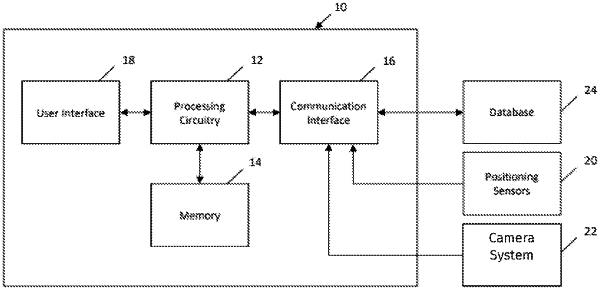| CPC B60W 50/0097 (2013.01) [B60W 50/14 (2013.01); B60W 60/0051 (2020.02); G01C 21/3811 (2020.08); B60W 2050/146 (2013.01); B60W 2420/42 (2013.01); B60W 2540/30 (2013.01)] | 8 Claims |

|
1. An apparatus configured to predict behavior of a vehicle based at least in part on a class of the vehicle in real time, the apparatus comprising at least one processor and at least one memory storing computer program code, the at least one memory and the computer program code configured to, with the processor, cause the apparatus to at least:
obtain image data of the vehicle while driving from a via a vehicle camera system, wherein the image data includes physical characteristics of the vehicle, the physical characteristics distinguishing the vehicle as farm equipment;
provide the image data to a first machine learning model; and
generate class prediction data for the vehicle utilizing the first machine learning model, wherein the first machine learning model generates the class prediction data based at least in part on the physical characteristics distinguishing the vehicle as farm equipment; wherein the at least one memory and the computer program code are further configured to, with the processor, cause the apparatus to further:
identify one or more points of interest upon a roadway located within a predefined distance at which the corresponding image data was captured via camera systems located upon the vehicle, wherein the one or more points of interest are relevant to farm equipment;
provide information regarding the one or more points of interest and the class prediction data for the vehicle to a second machine learning model;
predict the behavior of the vehicle utilizing the second machine learning model based upon the one or more points of interest and the class prediction data; and
control a vehicle navigation system, a vehicle control system, a vehicle electronic control unit, or an autonomous vehicle control system in response to the predicted behavior of the vehicle.
|